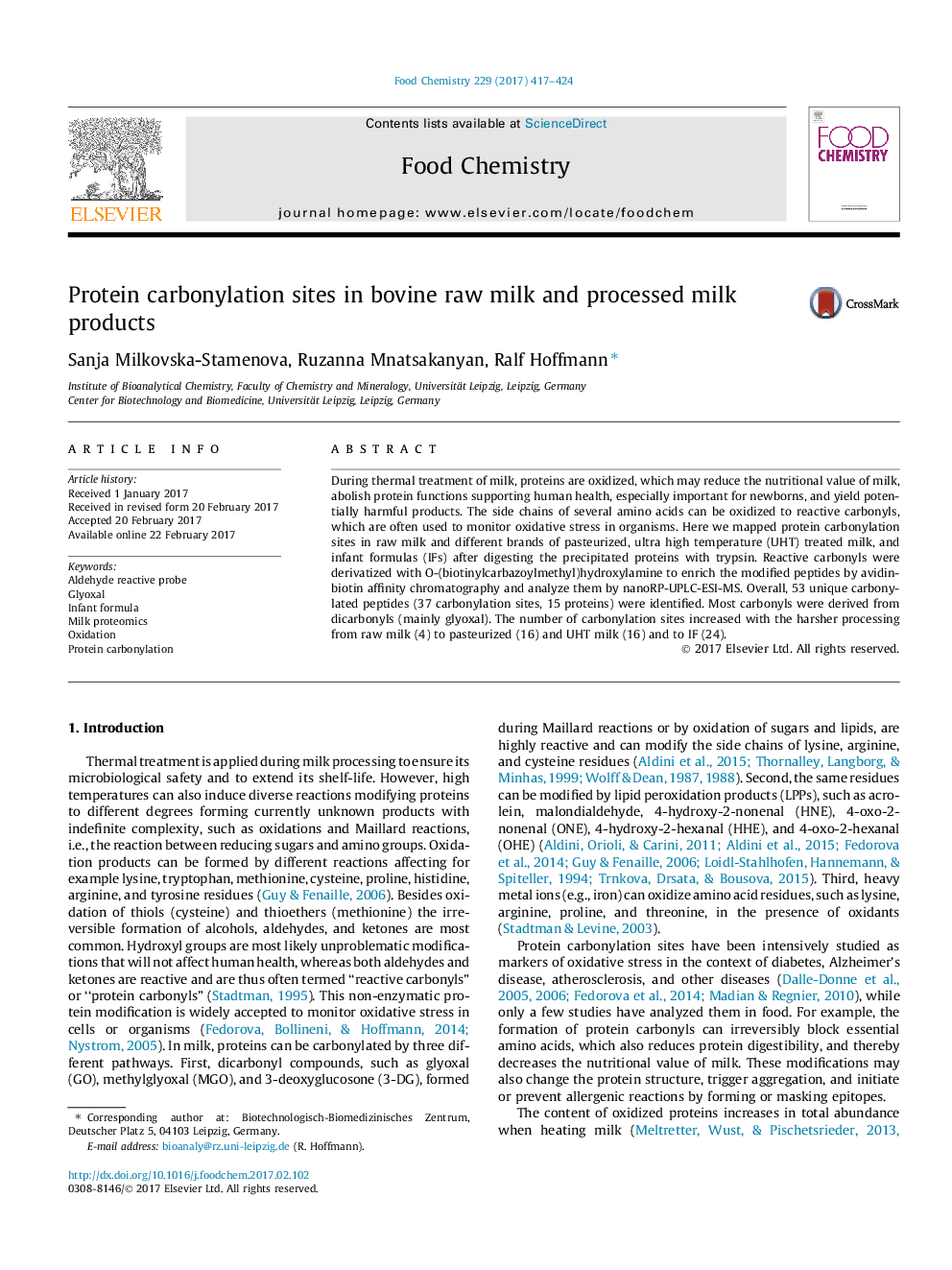| کد مقاله | کد نشریه | سال انتشار | مقاله انگلیسی | نسخه تمام متن |
|---|---|---|---|---|
| 5133639 | 1492063 | 2017 | 8 صفحه PDF | دانلود رایگان |

- Carbonylation sites were mapped in raw milk and processed milk products.
- 53 carbonylated peptides (37 carbonylation sites, 15 proteins) were identified.
- Most protein-bound carbonyls were derived from dicarbonyl compounds (mainly glyoxal).
- The number of dicarbonyl-derived carbonylation sites was highest in infant formulas.
During thermal treatment of milk, proteins are oxidized, which may reduce the nutritional value of milk, abolish protein functions supporting human health, especially important for newborns, and yield potentially harmful products. The side chains of several amino acids can be oxidized to reactive carbonyls, which are often used to monitor oxidative stress in organisms. Here we mapped protein carbonylation sites in raw milk and different brands of pasteurized, ultra high temperature (UHT) treated milk, and infant formulas (IFs) after digesting the precipitated proteins with trypsin. Reactive carbonyls were derivatized with O-(biotinylcarbazoylmethyl)hydroxylamine to enrich the modified peptides by avidin-biotin affinity chromatography and analyze them by nanoRP-UPLC-ESI-MS. Overall, 53 unique carbonylated peptides (37 carbonylation sites, 15 proteins) were identified. Most carbonyls were derived from dicarbonyls (mainly glyoxal). The number of carbonylation sites increased with the harsher processing from raw milk (4) to pasteurized (16) and UHT milk (16) and to IF (24).
Journal: Food Chemistry - Volume 229, 15 August 2017, Pages 417-424